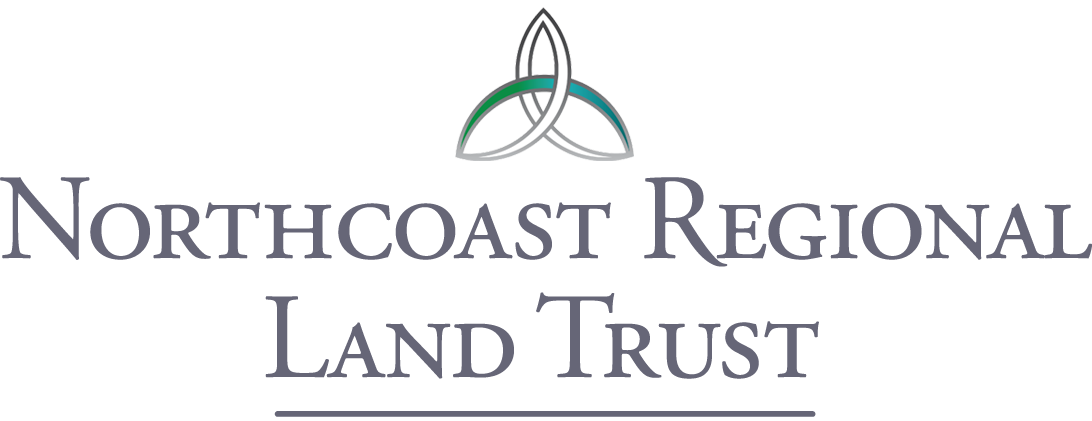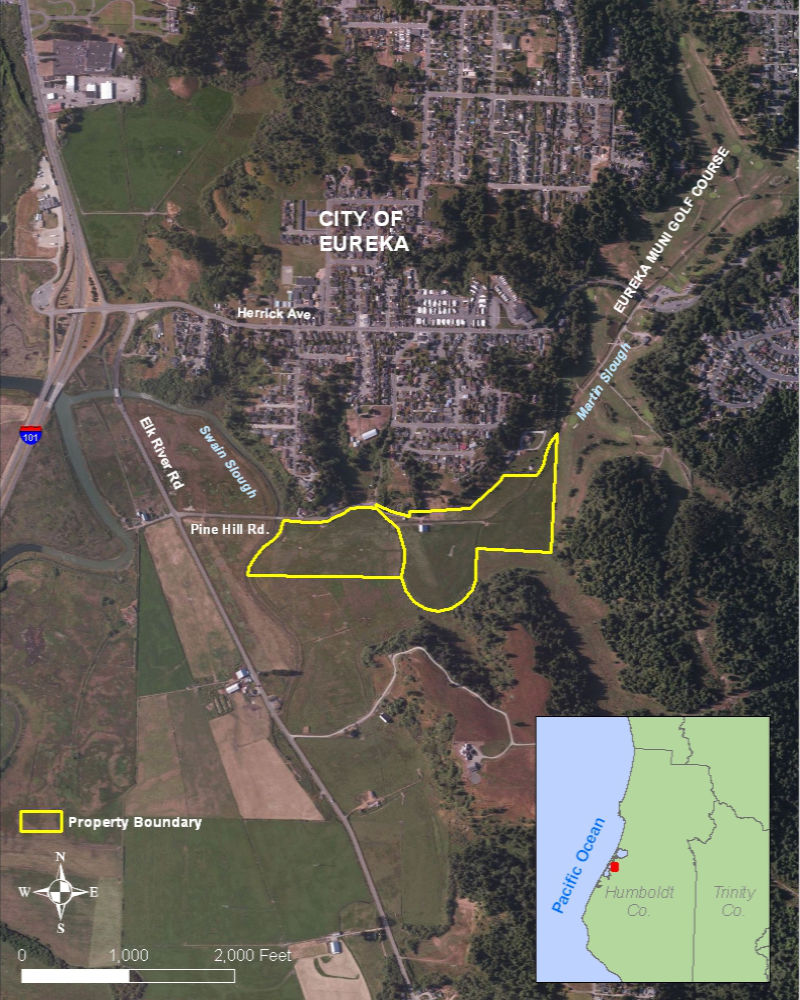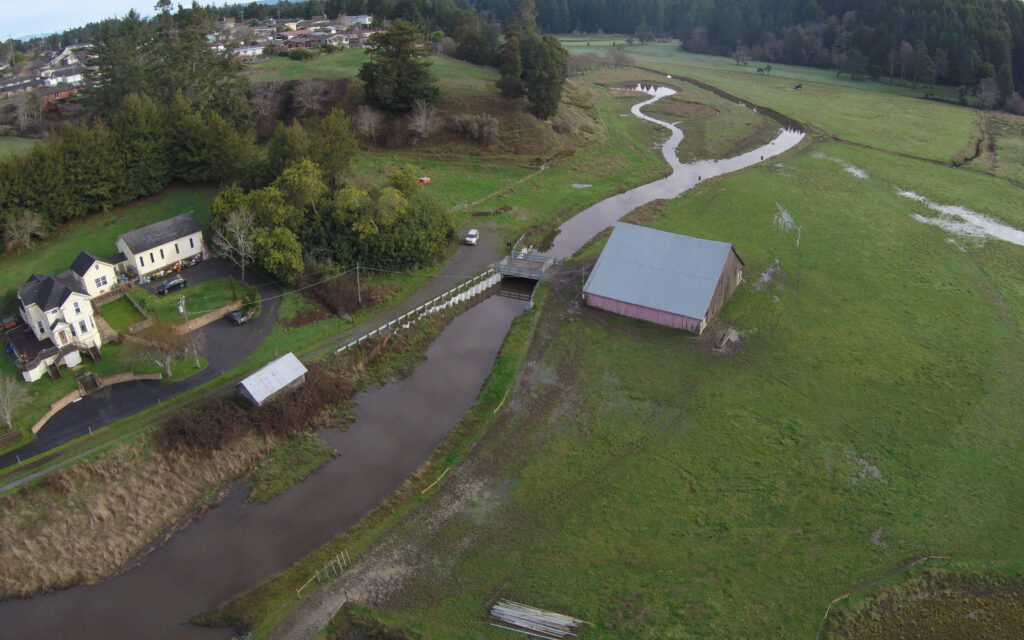Our Stewardship work occurs in partnership with the private landowners who live, work, and play on the lands we have helped conserve. Each year, Land Trust staff visit the conservation easement properties to ensure the terms of the easement are upheld and to visit with the landowners.
In addition to land conservation projects, the Northcoast Regional Land Trust partners with other agencies and organizations on habitat restoration and enhancement projects.
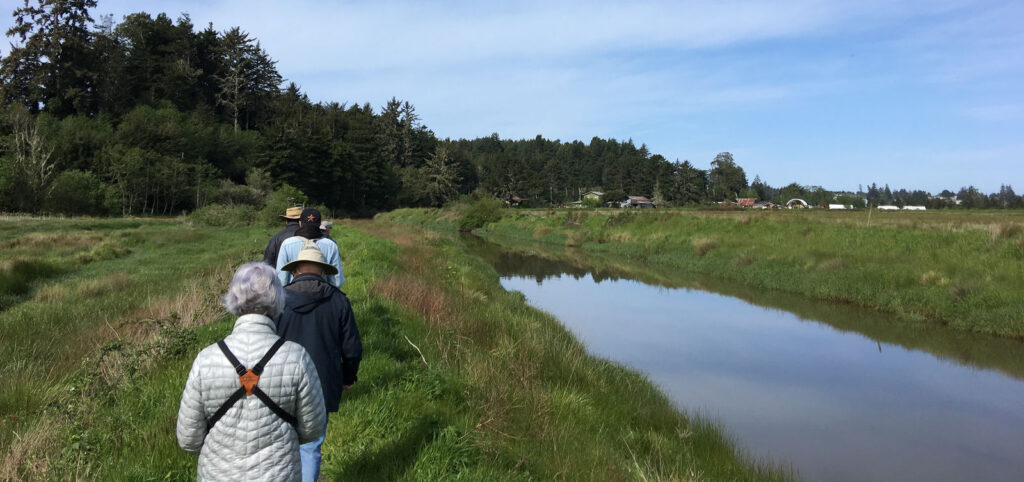
In 2005, the Land Trust purchased 54 acres of bottomland pasture from neighboring Freshwater Farms Nursery to facilitate a wetland restoration and enhancement project and to maintain agricultural uses, and in 2012 acquired the 20-acre Freshwater Farms Nursery property, reuniting it with the Freshwater Farms Reserve for a total of 74 acres.
Located in an area historically dominated by tidal wetlands, the property was converted to pasture in the early 1900’s to support the growing agrarian culture in Humboldt County. Wood Creek, which runs through the property, meets with Freshwater Slough and is part of the larger Humboldt Bay tributary complex. The Land Trust, recognizing the need to reclaim wetland habitat that is vital to the successful rearing of salmon and steelhead, as well as other wetland-dependent species, worked with numerous public and private groups to design and implement the restoration. For details on the Freshwater Farms Reserve project click here.
Elements of the restoration included: removal of a wooden-flap tide gate; construction of 3,200 feet of slough channels; removal of a 300-foot berm on the north bank of Wood Creek; construction of three habitat ponds; replacement of an old, crushed culvert with a modified flatbed trailer bridge; construction of tidal hummocks (shallow hills subject to tidal inundation); and revegetation of the entire project area with over 46,000 native wetland plants.
Freshwater Farms Reserve is now a thriving community hub featuring the restored Graham-Long dairy barn and milk parlor, a public access nature trail, grazing land, a farm stand, and wildlife habitat. Plus it’s the home of the North Coast Chapter of the California Native Plant Society.
The 43-acre Martin Slough property encompasses productive bottomlands along an important fish-bearing tributary of Humboldt Bay near Eureka. The property was purchased by NRLT in 2011 with the goals of restoring riparian and wetlands habitats, improving fish access and habitat quality, reducing upstream flooding, and maintaining traditional agricultural production. These goals will be met through the implementation of the Martin Slough Enhancement Project, which is further explained in our Martin Slough Story below. Additionally, the land will be preserved and protected from uses that diminish its natural and agricultural values. Project partners include the State Coastal Conservancy, the Natural Resource Conservation Service, the City of Eureka, the Redwood Community Action Agency, and the Eureka Municipal Golf Course.
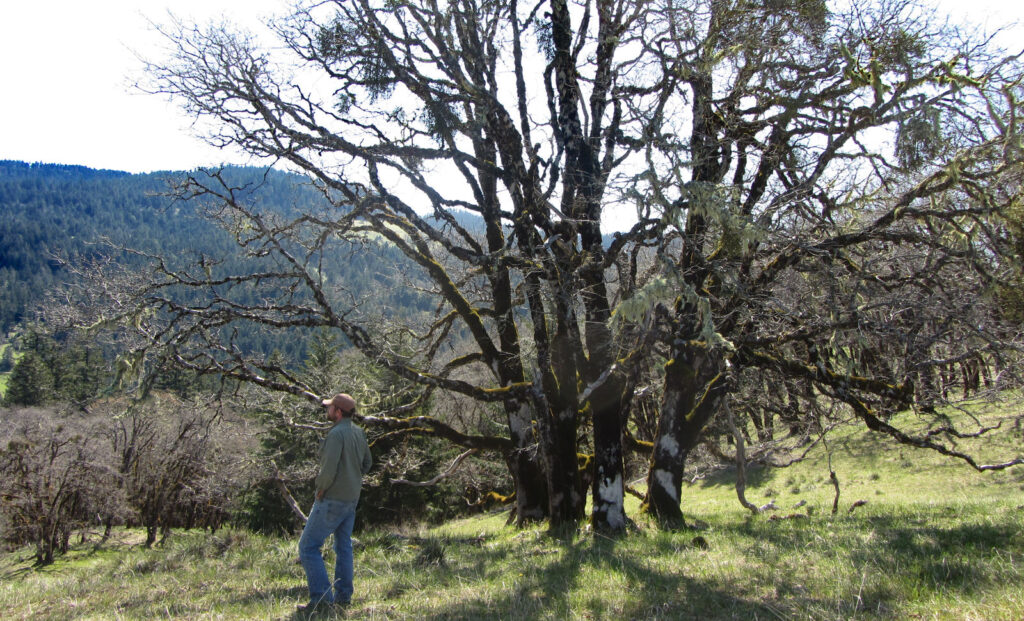
Oak woodlands are a natural feature of ecological, economic, cultural, aesthetic, recreational, and historic importance to the people of Humboldt County and the rest of California. In addition to providing essential wildlife habitat, retaining soil, and contributing to the conservation of water resources, oak woodlands provide unique opportunities for food gathering, grazing, hunting and recreation. In response to the ongoing degradation and loss of oak woodlands in California, the state legislature has in recent years passed legislation (eg. Oak Woodlands Conservation Act of 2001) recognizing oak woodlands as a valuable but diminishing resource and creating new policies and programs designed to protect them.
